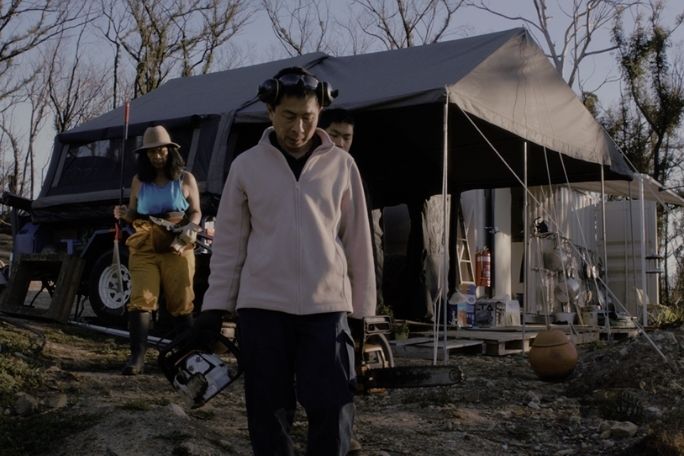Lesson summary
Students compare similar scenarios to distinguish between wants and needs. Using this, they will explore the relationship between things we need in life and social issues before examining the different types of enterprise operations that exist and how they do or do not address social issues, using examples from Australia and afar.
Learning intentions:
Students will...
- understand narrative structure.
- understand how narrative structure can be used effectively to reflect a dangerous experience.
Success criteria:
Students can...
- craft a narrative response using the narrative structure pyramid.
- engage actively with strength and resilience in the face of a disaster.
Lesson guides and printables
Lesson details
Curriculum mapping
Australian curriculum content descriptions:
Year 7 English:
- Create literary texts that adapt stylistic features encountered in other texts, for example, narrative viewpoint, the structure of stanzas, contrast and juxtaposition (ACELT1625)
- Plan, draft and publish imaginative texts, selecting aspects of subject matter and particular language to convey information and ideas (ACELY1725).
Year 8 English:
- Create literary texts that draw upon text structures and language features of other texts for particular purposes and effects (ACELT1632).
- Create imaginative texts that raise issues, report events and advance opinions, using deliberate language and textual choices (ACELY1736).
Syllabus outcomes: EN4-6C, EN4-4B.
General capabilities: Literacy.
Cross-curriculum priority: Sustainability.
Relevant parts of Year 7 English achievement standards: Students create texts showing how language features and images from other texts can be combined for effect. Students create structured and coherent texts for a range of purposes and audiences.
Relevant parts of Year 8 English achievement standards: Students create texts for different purposes, selecting language to influence audience response. When creating and editing texts to create specific effects, they take into account intended purposes and the needs and interests of audiences. They demonstrate understanding of grammar, select vocabulary for effect and use accurate spelling and punctuation.
Level of teacher scaffolding: Medium – Teachers will need to introduce and explain the narrative structure, but much of the lesson is student-driven as they plan and craft their own narratives.
Resources required
- A device capable of presenting a video to the class
- Student Worksheets – one copy per student
Skills
This lesson is designed to build students’ competencies in the following skills:
- Communication
- Creativity
- Critical thinking
- Empathy
Additional info
We encourage you to undertake the free PD Course How to teach a unit on fire and flood resilience for tips on how to best deliver this lesson.
If you’re concerned about the challenging nature of these topics, consider the free PD Course How to approach trauma in the classroom for information on how best to support your students.
This lesson was made in partnership with
Minderoo Foundation (www.minderoo.org).


Welcome back!
Don't have an account yet?
Log in with:
By signing up to Cool.org you consent and agree to Cool's privacy policy to
store, manage and process your personal information. To read more, please see
our privacy policy here(Opens in new tab).
Create your free Cool.org account.
Many of our resources are free, with an option to upgrade to Cool+ for premium content.
Already have an account?
Sign up with:
By signing up to Cool.org you consent and agree to Cool's privacy policy to
store, manage and process your personal information. To read more, please see
our privacy policy here(Opens in new tab).